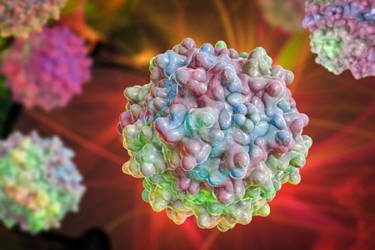Historical Review Of In-Life Data From Studies Utilizing AAVs For Gene Therapy
By Kelsey Brooks, Julie Forget, and Norbert Makori

The field of gene therapy has seen significant advancements in recent years, particularly with the use of adeno-associated virus (AAV) vectors as promising tools for in vivo gene delivery. Before clinical trials, nonhuman primates (NHPs) are commonly used in safety assessment studies, requiring prescreening for naturally occurring neutralizing antibodies (nAb) against AAV and often necessitating corticosteroid pre-treatment to mitigate immune responses.
To address the challenges of preclinical AAV studies, we analyzed data from over 20 studies conducted in the past three years to determine the minimal number of NHPs needed for nAb prescreening, effective corticosteroid premedication strategies, and common in-life findings. Our analysis revealed that only 38% (442/1219) of NHPs screened for AAV8 had low or negative viral titers, making them suitable for study inclusion, whereas approximately 80% of NHPs were eligible when screened for other AAV serotypes. Pre-treatment with 2 mg/kg of dexamethasone administered 1–2 hours before AAV dosing effectively mitigated adverse immune responses. Complement fragment C3a concentrations peaked at six hours post-dose on Day 1, averaging a 4.3-fold increase over baseline. Importantly, AAV-related effects on body weight were not observed, and most abnormal clinical signs following AAV administration were comparable to concurrent controls.
These findings provide valuable insights for optimizing AAV study designs while identifying opportunities to refine and reduce the use of NHPs in preclinical research.
Get unlimited access to:
Enter your credentials below to log in. Not yet a member of Drug Discovery Online? Subscribe today.
